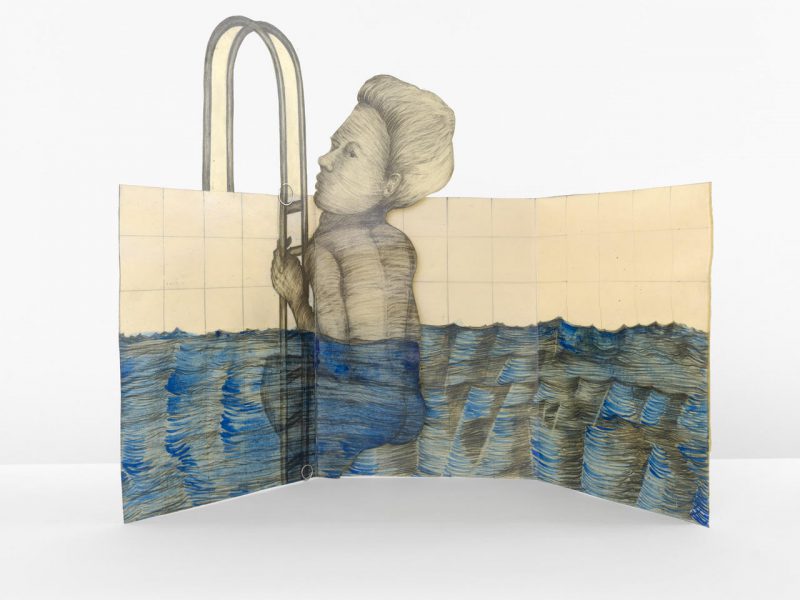Bendana | Pinel Art Contemporain is pleased to present in this edition of ZONAMACO, NEW PROPOSAL (booth NP1), the works of Sandra Vásquez de la Horra (1967, Chile).

Graphite and watercolor on paper, wax
40 x 27 x 27 cm
Sandra Vásquez de la Horra is known for her graphic work coated with wax which gives the sheet an additional material dimension. With graphite, the artist draws on different types of recycled paper and soaks them in wax. This act is part of the process of her drawing. The drawings of Vásquez de la Horra are powerful, mysterious and not immediately explicable. If her creations are based on a vision of life, death and sexuality that is subtle, whimsical and full of humor, political resonances are sometimes suggested which evoke with restraint the violence of power. Throughout her work, she appropriates popular iconographies and expressions through processes of compilation, association, and hybridization, creating drawings where figures, scenes, and allegories from dissimilar times are twisted in a contemporary mythology and personal alphabet.
Vásquez de la Horra’s drawings render transfigurations and store material strata, from found papers, including accounting books of the German Democratic Republic (DDR), through the graphite to the final layer of warm beeswax. As an extended operation of engraving, the wax bath seals the work, setting deeply the lines, and the papers turn out ochre, translucent and precarious. Gradually, the drawings become papyrus and skin—and the dark inscriptions thrill both as ancient irreverent signs and as cool contemporary tattoos.
Mounted unframed directly on the wall, the quasi-archeological and organic pieces form a non-lineal drawing installation, an oval, a spiral or a constellation. Likewise, the popular and intriguing ex-votos’ walls, Vásquez de la Horra’s arrangements are driven by the baroque principles; though, their desire of salvation is quite profane and contingent: the rearrangement and restoration of memory. This memory is both personal – as some of Vásquez de la Horra’s drawings depict visions of her nightmares and most intimate fears – and collective – as Vásquez de la Horra deeply questions the notion of identity, and how Europeans tend to impose their biased vision on Latin America’s recent History.
Since a few years, the artist has developed her drawing practice into three dimensions, making discreet structures resembling model houses. Each one begins with the artist drawing on the surfaces of the flattened model, before assembling the structures and, lastly, dipping them in wax.
In this sense, Vásquez de la Horra is very much an “anthropological artist” as she likes to say. Vásquez de la Horra commits herself to an art that is inherently interdisciplinary, an art about identity and migration. Vásquez de la Horra intends to convey and celebrate “the soul of Latin America”, and the essential nature of her work is undoubtedly reflecting it: transformative and experimental.